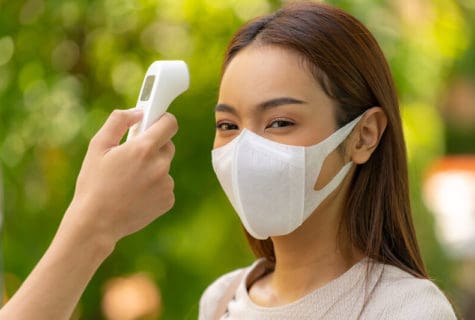
Screening your employees for coronavirus is a ticking time bomb. Require too much from employees and your demands could trigger a complaint and even a lawsuit.
Ask too little and the safety of your patients and staff are at risk. Cut through the confusion of how to screen your employees so your policies best diffuse allegations of discrimination, privacy breaches, and/or employment violations. Take these 5 steps to stop lawsuits for breaches in your COVID-19 employee screenings policies.
Abide Regulations
It’s understandable that you’re confused by compliance screening allowances for your practice. You have to follow a myriad of federal agencies that all have different screening guidance. COVID-19 employee screening.
- Reduces viral spread: The Centers for Disease Control (CDC) recommends that you conduct daily health screenings, encourage face coverings for employees, and implement social distancing.
- Demands injury prevention: The Occupational Safety and Health Administration (OSHA) requires that you keep employees safe from hazards that can cause death or serious physical harm, identify risk levels, and implement control measures.
- Prevents mistreating individuals: The Equal Employment Opportunity Commission (EEOC) protects workers against discrimination.
- Protects record privacy: The Americans with Disabilities Act (ADA) states that you must keep employee health information confidential.
Put them all together and you have a complicated recipe for compliance screening your employees!
Best bet: You need to create and implement a non-discriminatory compliance screening policy that will keep your employees safe from COVID-19. Also, keep an eye on the ever-changing federal mandates from the CDC, OSHA, and the EEOC, and adhere to your state and local law for guidance.
Conduct Temperature Checks
The EEOC outlines in their Pandemic Preparedness documentation that during a pandemic, you are permitted to take employees’ temperatures who are coming into your practice. Typically an employee would be a risk with a temperature of 100.4 or higher, and you may elect to screen employees’ temperatures in a number of ways including:
- Honor system. Ask your employees to take their temperatures at home before coming to work every day. The benefit to self-monitoring is it minimizes the risk of COVID-19 spread and it’s a simpler method to administer.
- At work. Take employees temperatures when they arrive at work before they clock in for their shift. The benefit to this method is it’s a stricter procedure to protect high-risk immune compromised patients. If you designate a staff member to conduct temperature checks, be sure to supply her with personal protective equipment (PPE) such as gloves, a gown, a face shield or goggles, and either a face mask or a respirator.
Screen for Symptoms
Asking employees about their health might feel a little invasive but during a pandemic, the ADA allows such questioning. The EEOC allows you to ask all of your employees who are physically entering your practice questions such as: COVID-19 employee screening.
- Do you have symptoms associated with COVID-19 such as cough, sore throat, fever, or chills?
- Are you awaiting the result of a COVID-19 test?
- Have you recently had contact with anyone with COVID-19 symptoms?
- Have you recently traveled out of the country or into a high-risk state?
When an employee is hacking, there is more that you can legally do than you might realize. You are allowed to ask her if she have been to a doctor or if she thinks she might have COVID-19. Generally, you wouldn’t be allowed to ask these questions but it’s permissible because cough is a COVID-19 symptom.
Keep Health Info Confidential
You’ve most likely already had to send an employee home due to an elevated temperature or COVID-19 symptoms. In these cases, you are required by the ADA to keep that information confidential. You should share this information only with members of company management who truly need to know, so make every effort to limit the number of people who receive the employee’s name. You are allowed to disclose the information to a staff member for contact tracing purposes. The designated tracer can interview the employee and find out who she may have had contact with at your practice. COVID-19 employee screening.
Manage Resistors, Candidates
While screening employees for COVID-19 seems simple it can also leave your practice exposed to privacy, discrimination, compensation, and employment legal risks if done incorrectly. Not every employee will willingly comply to daily temperature and health screenings—how do you handle that resistant employee? Do you have the right to screen a job applicant? COVID-19 employee screening.
During the online training, “Employee COVID-19 Screening: Avoid Costly Legal Mistakes,” from Michelle Anderson, JD, you’ll learn step-by step how to implement precautions and procedures that comply with all state and federal rules to protect your practice from the costly legal implications of getting it wrong.
COVID-19 Related Resources For Your Medical Practice
 |
 |
 |
||||||||
| . | ||||||||||
| Employee COVID-19 Screening: Avoid Costly Legal Mistakes |
Head Off Costly COVID-19 Employee Testing Policy Violations |
Keep More PPP Money with Proven Forgiveness Application Tactics | ||||||||
|
|
|
